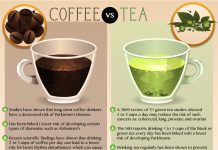Are you a coffee lover struggling to find the perfect cup that suits your taste buds?
Look no further! This article will explore the art of choosing the proper coffee that aligns with your unique preferences.
Whether you prefer bold, full-bodied flavors or a more delicate and nuanced taste, we’ve got you covered.
Discover the secrets to selecting the perfect coffee that will elevate your morning routine and satisfy your coffee cravings like never before.
So grab a mug, sit back, and embark on a flavorful journey together!
Types of Coffee Beans
Arabica
Arabica coffee beans are the most popular and widely consumed coffee beans. Known for their delicate and nuanced flavors, Arabica beans are grown at higher altitudes and in cooler climates.
They have a more complex and nuanced flavor profile than coffee beans, with notes of fruit, berries, chocolate, and caramel. Arabica beans are typically less acidic and smoother, making them an excellent choice for those who prefer a milder and less bitter taste in their coffee.
Robusta
Robusta coffee beans are the second most commonly produced variety of coffee beans, and they are known for their strong and bold flavors.
Robusta beans have a higher caffeine content than Arabica beans, and they are often used in espresso blends for their ability to produce a thick, rich crema. Robusta beans have a more bitter and earthy taste, with notes of dark chocolate and nuts.
They also have a higher acidity level, which gives them a sharper and more pronounced taste. Robusta beans might be your perfect choice if you enjoy a strong, bold, and full-bodied cup of coffee.
Liberia
Liberica coffee beans are the rarest and least known type of coffee bean. They are mainly grown in the Philippines and have a unique flavor profile, often described as fruity and floral, with hints of dark chocolate. Liberica beans are known for their large size and asymmetrical shape.
They have a low acidity and full-bodied taste, making them an excellent choice for a unique and distinctive coffee experience. Due to their rarity, Liberica beans are less commonly found in commercial coffee blends, but they are worth trying if you want to explore something new and different.
Roasting Levels
Light Roast
Light roast coffee beans are roasted for a shorter duration and at lower temperatures, which preserves the original flavors of the coffee beans. They have a light brown color and a dry surface. Light roast coffee beans retain more caffeine than darker roasts and have a bright and vibrant acidity.
The flavors of light roast coffee beans are often described as floral, fruity, and tea-like, with notes of citrus and berries. Light roast coffee beans are the way to go if you enjoy a more delicate and nuanced flavor profile with a higher caffeine kick.
Medium Roast
Medium roast coffee beans are roasted longer and at slightly higher temperatures than light roast beans. They have a medium brown color and a slightly oily surface.
Medium roast coffee beans have a balanced acidity and a fuller body than light roasts. They offer a well-rounded flavor profile with chocolate, nuts, and caramel notes. Medium roast coffee beans are a popular choice for those who prefer a smooth and flavorful cup of coffee that is not too strong or light.
Dark Roast
Dark roast coffee beans are roasted longer and at higher temperatures, resulting in a darker color and a shiny, oily surface. Dark roast coffee beans have a lower caffeine content than lighter roasts and a bold and rich flavor profile.
They are characterized by their smoky and caramelized taste, with notes of dark chocolate and toasted nuts. Dark roast coffee beans have a lower acidity level and a fuller body, making them a popular choice for those who enjoy a solid and intense cup of coffee.
Single-Origin Coffee vs. Blends
Single-Origin Coffee
Single-origin coffee refers to coffee beans sourced from a specific geographic region or estate. These beans are not mixed or blended with beans from other regions, allowing that particular region’s unique flavors and characteristics to shine through.
Coffee enthusiasts who appreciate different coffee-growing regions’ distinct flavors and terroir often favor single-origin coffees. They offer a more authentic and specific taste experience, as each region imparts flavor profiles and nuances to the coffee beans.
Coffee Blends
On the other hand, coffee blends are a combination of coffee beans sourced from different regions or estates. Blending allows coffee roasters to create a consistent flavor profile and balance different flavors and characteristics from various regions to achieve a desired taste.
Blends are often created to cater to a broader consumer base and provide a more balanced and approachable coffee experience. Coffee blends offer a harmonious combination of different flavors, acidity levels, and body, making them a popular choice for those who prefer a well-rounded and versatile cup of coffee.
Flavored Coffee
Natural Flavorings
Natural flavorings refer to natural sources such as fruits, spices, and extracts. This flavored coffee usually involves infusing the coffee beans or the brewed coffee with natural ingredients to impart a distinct flavor.
Natural flavorings can range from classic flavors like vanilla, cinnamon, or hazelnut to more adventurous combinations like mocha or salted caramel. The use of natural flavorings adds an extra layer of complexity and depth to the flavor profile of the coffee, providing a unique and enjoyable taste experience.
Artificial Flavorings
On the other hand, artificial flavorings are created through chemical processes and are not derived from natural sources. These flavorings often mimic popular natural flavors but are produced synthetically.
Artificial flavorings can provide a wide range of flavors, from traditional options like Irish cream or chocolate mint to more unconventional choices like cotton candy or pumpkin spice.
While artificial flavorings may lack the authenticity of natural flavorings, they can provide a consistent and intense flavor profile, making them a popular choice for those who prefer a specific and highly pronounced taste in their coffee.
Decaffeinated Coffee
Swiss Water Process
The Swiss Water Process is a decaffeination method that uses only water and osmosis to remove caffeine from coffee beans. This process involves soaking the beans in hot water to dissolve the caffeine and other soluble components.
The water is then passed through activated charcoal filters, which naturally attract and remove the caffeine molecules while leaving the other flavor compounds intact. The decaffeinated coffee beans are then dried and roasted as usual. The Swiss Water Process is preferred for those who want to enjoy decaf coffee without chemical agents, resulting in a clean and natural decaffeination process.
Chemical Agents Process
The chemical agent’s direct solvent process involves using chemical solvents such as methylene chloride or ethyl acetate to extract the caffeine from the coffee beans. This process starts with steaming the beans to open their pores, then soaking them in a solvent bath to dissolve the caffeine.
After removing the caffeine, the beans are rinsed and dried before being roasted. The chemical agent process is more widely used due to its efficiency and effectiveness in decaffeinating large batches of coffee beans. However, some people may be concerned about potential residue from the chemical solvents remaining in the decaffeinated coffee.
Brewing Methods
Pour-Over
Pour-over is a manual brewing method that involves pouring hot water over coffee grounds in a filter. This allows the water to slowly pass through the grounds, extracting the flavors and oils, resulting in a clean and flavorful cup of coffee.
Pour-over brewing allows for precise control over brewing variables such as water temperature, pouring technique, and brew time, which can significantly influence the final taste of the coffee. This method is preferred by many coffee enthusiasts who appreciate the ability to experiment and fine-tune their brewing to achieve their desired flavor profile.
French Press
The French press, a plunger or press pot, is a popular brewing method that involves steeping coarsely ground coffee in hot water and pressing a metal mesh filter to separate the brewed coffee from the grounds.
French press brewing allows for a longer contact time between water and coffee grounds, resulting in a rich and full-bodied cup of coffee. The metal mesh filter retains more of the coffee’s natural oils, contributing to a fuller flavor and heavier mouthfeel. French press brewing is loved for its simplicity and ability to produce a robust and satisfying cup of coffee.
Espresso
Espresso is a concentrated and intense brewing method that utilizes high pressure to extract the flavors and oils from finely ground coffee. The brewing process involves forcing hot water through compacted coffee grounds, resulting in a shot of coffee with a thick and creamy consistency known as crema.
Espresso has a strong and bold flavor profile with a balanced sweetness, Acidity, and bitterness. This brewing method is the foundation for coffee-based drinks, such as cappuccinos, lattes, and macchiatos. Espresso brewing requires specialized machines and grinders to achieve the desired pressure and extraction.
Automatic Drip
Automatic drip coffee makers are among households and offices’ most common and convenient brewing methods. This method involves heated water poured over coffee grounds and placed in a filter basket.
The water drips through the grounds and into a carafe, resulting in a large quantity of coffee ready to be served. Automatic drip brewing provides a consistent and predictable taste, although it may lack the precision and control of manual brewing methods. This brewing method is favored for its ease of use and ability to cater to more people.
Strength and Caffeine Content
Differentiating Coffee Strength
Coffee strength refers to the perceived intensity of flavor and aroma in a cup of coffee. It is often associated with the concentration of coffee solids, oils, and flavors extracted during brewing.
The strength of coffee can be influenced by various factors, such as the ratio of coffee to water, the brewing method used, and the roast level of the beans. Generally, a higher coffee-to-water ratio, darker roast, and longer extraction time can produce a more robust cup of coffee. However, strength is subjective and can vary depending on personal taste preferences.
Understanding Caffeine Content
The caffeine content in coffee can vary depending on factors such as the type of coffee bean, the roast level, and the brewing method. Generally, Robusta beans have a higher caffeine content compared to Arabica beans.
Darker roasts tend to have slightly less caffeine than lighter roasts, as prolonged roasting can break down some caffeine molecules.
The brewing method also affects the caffeine content, with espresso having a higher concentration per serving than other brewing methods. It’s important to note that individual sensitivity to caffeine can vary, and some people may feel more energized or experience more substantial effects from caffeine.
Sweetness and Acidity Levels
Balancing Sweetness and Acidity
The sweetness and acidity levels in coffee are crucial in determining the overall flavor profile and balance. Sweetness in coffee can be influenced by factors such as the caramelization of sugars during roasting, the brewing method used, and the quality of the beans.
On the other hand, Acidity is influenced by factors such as the coffee bean variety, the growing conditions, and the roast level. Finding a balance between sweetness and Acidity that suits your taste preferences is essential. Some people may prefer a sweeter and less acidic cup of coffee, while others enjoy a brighter and more acidic taste.
Identifying Acidity Levels
Acidity in coffee refers to the perceived brightness or tanginess in the flavor. It is not related to pH levels but to the organic acids in coffee beans. Different coffee beans and growing conditions can contribute to varying levels of Acidity.
Arabica beans tend to have a higher acidity level than Robusta beans, with flavors ranging from fruity and citrusy to wine-like and tangy.
Identifying acidity levels in coffee involves paying attention to the flavor’s perceived brightness, sharpness, and crispness. Some people enjoy a higher acidity level for its lively and refreshing qualities, while others prefer a smoother and less acidic taste.
Body and Mouthfeel
Defining Coffee Body
Body in coffee refers to the perceived weight, thickness, and texture of the coffee in the mouth. It is influenced by factors such as the brewing method, the roast level, and the quality of the beans.
Lighter roasts and brewing methods that involve a shorter contact time between water and coffee grounds tend to result in lighter-bodied coffee, while darker roasts and methods that allow longer contact time produce fuller-bodied coffee. The body of coffee can range from light and tea-like to medium and smooth, all the way to complete and creamy.
Evaluating Mouthfeel
Mouthfeel in coffee refers to the tactile sensations experienced while drinking the coffee, such as the smoothness, creaminess, and lingering aftertaste. It is influenced by factors such as the brewing method, the roast level, and the quality of the beans.
Different brewing methods can result in different mouthfeel characteristics, with espresso producing a thick and velvety texture, while pour-over brewing can offer a light and clean mouthfeel. Evaluating the mouthfeel involves paying attention to the texture, viscosity, and overall sensation in the mouth, which can significantly enhance the overall coffee-drinking experience.
Experimenting and Tasting
Trying Different Varieties
One of the best ways to discover your preferred coffee taste profile is to try different varieties of coffee beans. Experimenting with different origins, roast levels, and brewing methods can help you better understand your preferences. Try single-origin coffees from different regions to explore their unique flavor profiles.
You can also sample different blends that combine beans from various regions to see how their flavors complement each other. Don’t be afraid to step outside your comfort zone and try new and exciting coffee options. This experimentation process can be an enjoyable and educational journey to finding your perfect cup of coffee.
Developing Taste Preferences
Discovering your taste preferences in coffee is a journey that takes time and exploration. Start by paying attention to the flavors, Acidity, sweetness, body, and overall balance in the coffees you try. Take note of the characteristics you enjoy and those you might not prefer. This will help you develop a better understanding of your taste preferences.
Keep a journal or log where you can record your experiences and observations. As you continue to taste different coffees, you will develop a more refined palate and be able to articulate your preferences more confidently. Remember that taste is subjective, and what matters most is finding the coffee that brings you joy and satisfaction with every sip.




































